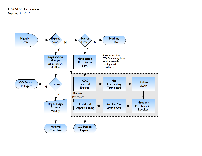What kind of CO are you?
- make sure to have gone through the CO Requirements Assessment document - it is a useful exercise to really start to understand some of the details of your own environment that will express themselves in how the CMP is used
|
Planning for a Standalone platform |
Expecting to be Embedded in a Portal |
|---|---|---|
Single CO |
Probably a command-line oriented CO with an equal focus on person identity and tool availability |
Probably a CO with a more app-focused collaboration |
Multiple CO within the CMP |
Probably a CO that is acting more as a service provider to various groups than one focused on a single collaboration effort, where absolute control over branding is important |
Probably a CO that is acting as a service provider to a variety of collaborations that cannot share resources fully, but where the apps and services are still the focus of the collaboration |
How will people come in to your CO?
- If you can create an enrollment flow (basically, how documenting people are provisioned and de-provisioned within the CMP), you have made a huge step in being able to automate the process. The goal here is to make this easy and yet thorough, and to have it flow through so that the time in a CO is spent on collaboration, not administration.
Example of an enrollment flow:
Example of an expiration flow:
What roles will people play?
- Determining what roles exist in your CO and what actions will be allowed within those roles is another area that must be covered for ease of use of the CMP.
Example of possible roles in a CO
Role |
Examples |
Create accounts |
Delete accounts |
Run partner tools (TeraGrid) |
Run local tools |
Access Community Data |
Add/Delete Community Data |
Add/Delete Groups |
Use Collaboration Tools (chat) |
Add/Delete User data |
Allocate Resources |
Request Resources |
Create CO Organization spaces |
|---|---|---|---|---|---|---|---|---|---|---|---|---|---|
Constrained user |
psuedo-anonymous, temporary, guest, possibly student, conference/tutorial specific accounts |
|
|
|
|
|
|
|
|
|
|
|
|
iPlant user |
identifiable user |
|
|
|
|
|
|
|
|
|
|
|
|
Steward |
community data steward, local tool owner |
|
|
|
|
|
|
|
|
|
|
|
|
Administrator |
Faculty, TA, Admin Asst. |
|
|
|
|
|
|
|
|
|
|
|
|
Developer |
tool developers/tool users (in Atmosphere), image creators |
|
|
|
|
|
|
|
|
|
|
|
|
Organization |
creating a CO, allocating resources to the CO |
|
|
|
|
|
|
|
|
|
|
|
|
Legend |
|
|---|---|
|
not allowed |
|
allowed |
|
allowed but with limited scope |
Groups
- One of the most powerful tools to help consolidate the actions around provisioning, reporting, and a variety of other activities is groups. While COmanage is designed to be agnostic with regards to what group management software you might be using, our richest experience is with Grouper. As your CO considers its group structure, you should plan on a few things
- Be sensible with your namespace. Groups will grow beyond your expectation, and long, extended group names have caused many sites difficulty in the past
- Group sprawl is a common situation, as individuals decide to create new groups rather than find out if a group already exists. Think on strategies to avoid or at least manage this by creating lifecycles for groups, requirements regarding group ownership, or whatever else might work in the culture of your CO.

